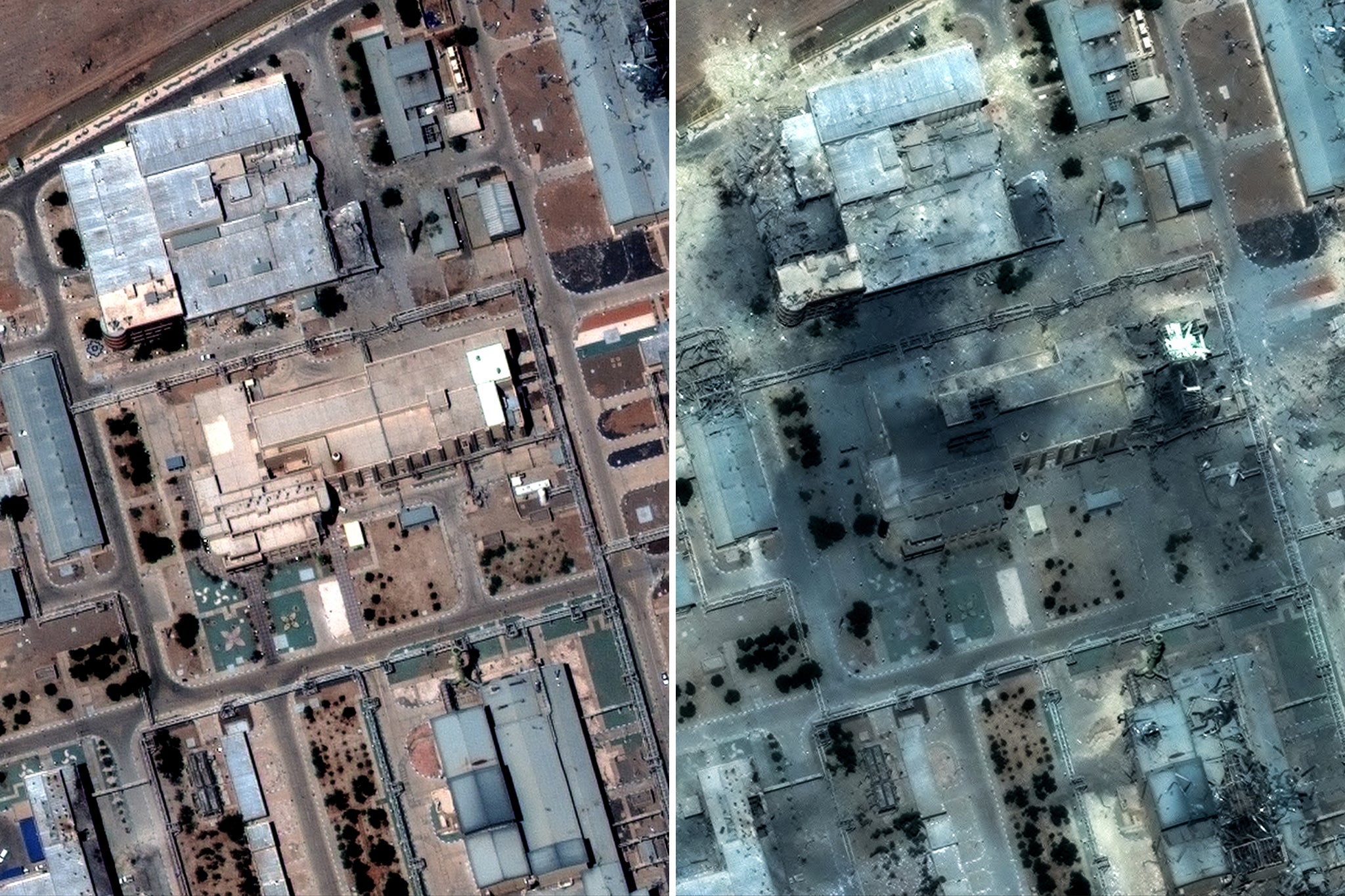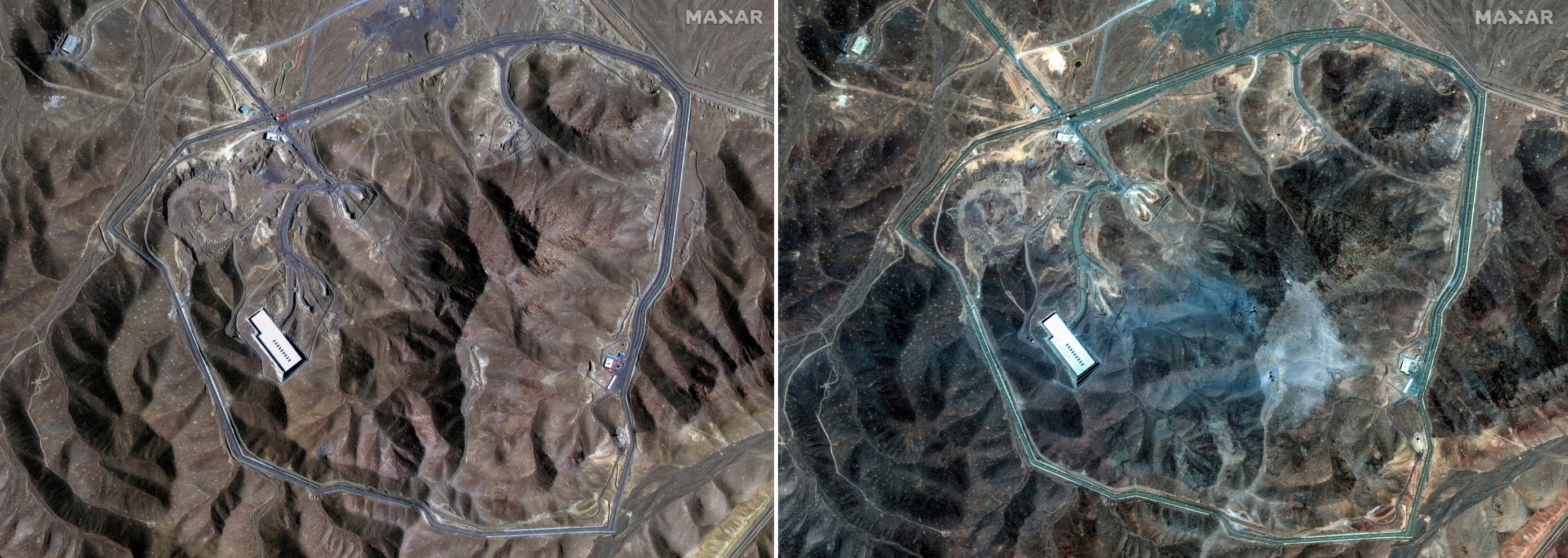US military strikes on three of Iran’s nuclear facilities over the weekend did not destroy the country’s nuclear program, early intelligence suggests, contrary to claims by President Donald Trump, a report states.
Citing four people briefed on the initial assessment produced by the Defense Intelligence Agency, CNN reports that the strikes likely only set Iran’s nuclear ambitions back by months.
The DIA, the Pentagon's intelligence agency, based its assessment on battle damage analysis carried out by U.S. Central Command after the strikes on Saturday night, according to one source who spoke with CNN.
While analysis of the damage to the three sites is still ongoing and may change as more intelligence becomes available, these early findings contradict Trump’s repeated claims that the strikes “completely and totally obliterated” Iran’s nuclear enrichment facilities.
The same claim was made on Sunday by Secretary of Defense Pete Hegseth.

Two of the people familiar with the assessment cited by CNN said Iran’s stockpile of enriched uranium was not destroyed. One said the centrifuges are largely “intact.”
That person added: “So the assessment is that the U.S. set them back maybe a few months, tops.”
Further details of the report, obtained by The New York Times, state that the bombing succeeded in sealing off the entrances to two of the facilities but did not collapse the underground buildings.
US intelligence estimated before the attacks that if Iran rushed to try and make a nuclear bomb, it could be done in about three months. The DIA report estimated that the delay was less than six months following the strikes.
According to the U.S. military, the operation went as planned and was an “overwhelming success.”
The White House has acknowledged the existence of the assessment to the network but said they did not agree with its conclusions.
In a statement, White House press secretary Karoline Leavitt told CNN: “This alleged assessment is flat-out wrong and was classified as ‘top secret’ but was still leaked to CNN by an anonymous, low-level loser in the intelligence community.”
She continued: “The leaking of this alleged assessment is a clear attempt to demean President Trump, and discredit the brave fighter pilots who conducted a perfectly executed mission to obliterate Iran’s nuclear program. Everyone knows what happens when you drop fourteen 30,000 pound bombs perfectly on their targets: total obliteration.”
Secretary Hegseth similarly pushed back, telling the network: “Based on everything we have seen — and I’ve seen it all — our bombing campaign obliterated Iran’s ability to create nuclear weapons.”
“Our massive bombs hit exactly the right spot at each target and worked perfectly,” he said. “The impact of those bombs is buried under a mountain of rubble in Iran; so anyone who says the bombs were not devastating is just trying to undermine the president and the successful mission.“
A comprehensive analysis of the damage to Iran’s nuclear program is still underway by the broader U.S. intelligence community, and the DIA assessment is the only one to be spoken of so far. Therefore, comparisons with other agencies are not possible at this time.
Congress had been scheduled to be briefed on the strike on Tuesday, and lawmakers were expected to ask about the findings of the assessment; however, the session was postponed with no explanation.
Democratic Rep. Pat Ryan of New York wrote on X that the real reason was that while President Trump claimed “all nuclear facilities and capability” had been destroyed, “his team knows they can’t back up his bluster and BS.”
Senators are now supposed to be briefed on Thursday.
Immediately after the strikes, Trump claimed the nuclear facilities were “completely and totally obliterated.”
— Pat Ryan 🇺🇸 (@PatRyanUC) June 24, 2025
He lied. And likely still doesn’t fully know the BDA.
What he does know is that an unsuccessful strike DRAMATICALLY increases the chance Iran races to break out.
As the smoke cleared over the three underground facilities at Fordow, Natanz and Esfahan hit by stealth bombers and cruise missiles over the weekend, experts who spoke with The Independent say the result may actually bring an Iranian nuclear bomb closer to reality and raise the risk of greater U.S. involvement in the conflict.
“Technically, it's probably slightly further away, but politically it's much more imminent,” said Dr. Jeffrey Lewis, director of the East Asia Nonproliferation Program at the Middlebury Institute and a former member of the International Security Advisory Board (ISAB), which advises the Secretary of State.
“Iran has been a few months away from a nuclear weapon since about 2007. It's clear that the thing that keeps them a few months away is not their technical capacity; it's their political will. And I think whatever loss in technical capacity they have suffered, it is more than compensated for by an increase in political will,” Lewis said.

Given the stage at which the U.S. strikes occurred, following days of Israeli attacks on Iran’s nuclear program, it is possible that there was time to remove and relocate centrifuges.
Over the years, Iran has accumulated an estimated 400 kilograms of highly enriched uranium — enough to produce about 10 nuclear weapons if it were further enriched from 60 percent to 90 percent, which is needed to build a device.
Following the strikes, Rafael Grossi, the head of the International Atomic Energy Agency (IAEA), said on Monday that his agency was seeking access to “account for” Iran’s highly enriched uranium stockpiles.
Vice President JD Vance conceded on Sunday that the stockpile is still in Iranian hands and its whereabouts are unknown.
With additional reporting by Richard Hall







